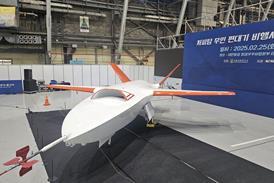Airline pilots have reported frequent, long-duration, "nuisance" traffic advisories (TAs) from their traffic-alert and collision-avoidance (TCAS) systems in North Atlantic air space during the two weeks since the implementation of reduced vertical-separation minima (RVSM) in the area.
RVSM is a procedure for operating with vertical separations of 1,000ft (305m) instead of 2,000ft above flight level 290 (29,000ft), for suitably equipped aircraft in certain airspace. It was introduced on some North Atlantic routings on 27 March.
The problem has been particularly acute in busy one-way tracks when aircraft travelling at almost identical Mach numbers are in close proximity for a long time, according to the US Air Line Pilots Association (ALPA).
Although the problem was anticipated (Flight International, 12-18 March, P8), the Internet is buzzing with pilot discussion about potential solutions. Setting track-offset courses is already commended by many pilots as a means of countering the increased collision risks caused by being dead-centre in two-way airways when using precision satellite-navigation-systems, and has some support as a measure to increase horizontal separation under RVSM.
Ward Baker of ALPA's safety department says that long TAs are a "nuisance" not a danger, and that there has been no advice of frequent resolution advisories (RAs). Baker says that ALPA's advice is never to turn the TCAS off, and never to ignore an RA. He adds that ALPA is working with manufacturers and the US Federal Aviation Administration to determine the best procedure.
The UK Civil Aviation Authority, which had issued an aeronautical-information circular in February warning crews to expect TAs and even RAs in North Atlantic RVSM airspace, points out that TCAS Version 7 software, expected in early 1998, is designed for RVSM operations and should eliminate unnecessary TAs.
Source: Flight International























